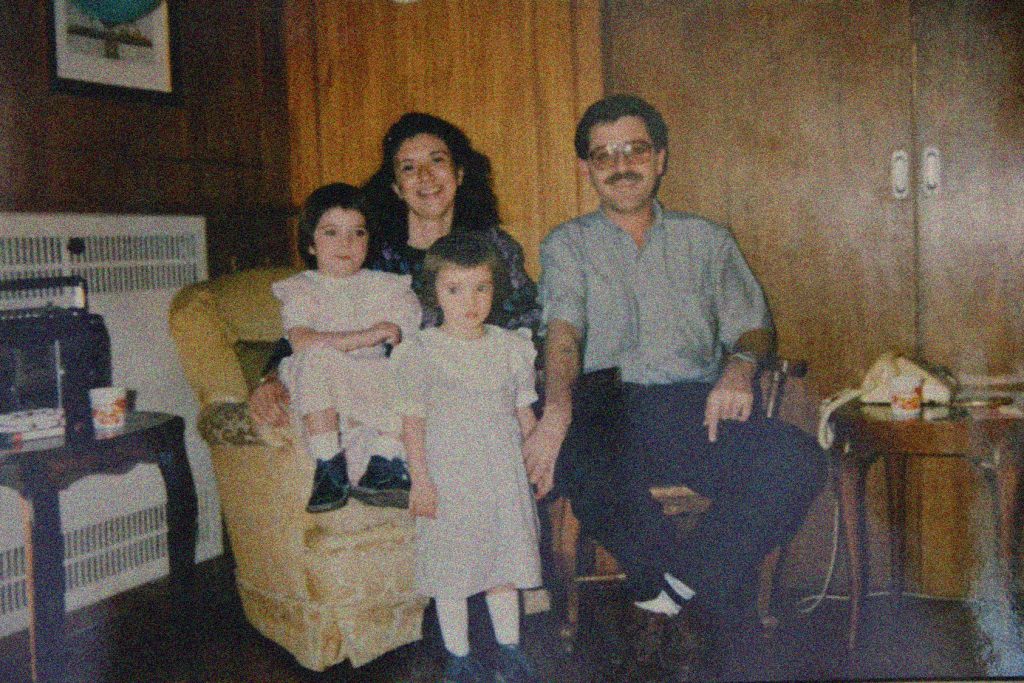Testimonial written by Mora Martin*
Photographs: Courtesy of the author
If you’ve missed “My Journey Through Grief #1”, read it here.
#2: The Triggers
Time has this curious way of bringing new information over and over again about something we thought we had resolved and considered finished. I think there were several triggers that led me to mourning my dad’s suicide (again? for the first time?), and although I am not sure about the exact order, these are the ones I remember:
1. My friend Cata, who lives in Barcelona, came to visit a few years ago. We met for a beer on a corner in Palermo. When she and La Negra asked how I was, I admitted—somewhat embarrassed—that I was working on anger in therapy. I confessed that I had never been able to express it or channel it properly, because in every home I’d lived, it was always someone else who owned that emotion. Cata, usually very respectful of my processes, surprised me with her bluntness. “Stop being angry at your parents,” she said. “You’ve been doing that for years.” Her loving ‘move on’ attitude had the expected effect, and her words remained bouncing in that special corner of my inner world, the one that later becomes a seed that germinates into a new learning.

2. Two days before my birthday in 2018, I went with my friend Guido to watch A Star is Born. I ignored the mental health disclaimers before the screening—after all, I didn’t consider myself part of that group. But suddenly the pre-suicide scene came, the one with the protagonist’s trembling hand placing his hat on the table before moving on with his decision. Ouch. That particular scene sank me into a dark swamp for weeks. I couldn’t process or put in words what I was feeling, but I could already tell it was a lot.
3. My friend Caro recommended the film Life Itself. Its abrupt, close-up portrayal of a suicide was as traumatizing as if I had been shot myself. I called her the following morning to complain and tell her that she should be more careful with her recommendations and consider that it might be painful for someone like me to watch. In reality, though, it hadn’t just been painful, it had been absolutely devastating. A few days later, I called her again. This time, I thanked her. What I felt when watching that scene was a revelation: my father’s suicide was, surprisingly, far from a “resolved issue”. What had initially filled me with rejection and sorrow became the lighthouse in a forest pointing towards the path, a sign that said “this is the way”.
4. In December, 2019, I started a new job near the last place my dad had lived. I found myself walking past the door of his building over and over again, until one day, for no particular reason, I sat down on the curb. I looked up at the sky, down the street, and tried to picture my dad walking down the block, worried about some mundane thought.
I cried for a good 20 minutes sitting there. Two strangers stopped to ask if I was okay.
While going through some of these triggers, March 13, 2020 arrived, and with it came the lockdown. In an instant, I was trapped, and not just inside my house, but with myself.
It was only then that I began to suspect that my near-non-existent self-esteem and my inability to open up fully —especially to boyfriends or guys I dated—might be linked to the fact that I hadn’t spoken about my father in 30 years. Throughout my adult life, despite all the therapies I had attended, I had meticulously managed to avoid the subject.
So, I started a new therapy once again. And with it came the slow unraveling of the layers of my grief.
But, what exactly is grief? What decision and what process was I stepping into?
“My Journey Through Grief” is delivered in four parts. Continue reading #3 here.
*Mora Martin was born in Buenos Aires, Argentina. At the age of 4, she learned to read and write with her grandmother while on vacation in Mar del Plata. From that moment, she realized that the written and spoken word was the gateway to creating her own infinite world of imagination, creativity, and self-growth. As a child, she voraciously read everything she could find and explored poetry and prose, bringing fantastic (and not so fantastic) characters to life. She attended several creative writing courses and non-fiction workshops. She lives in Buenos Aires, where she works in philanthropy and artistic production for cultural events.